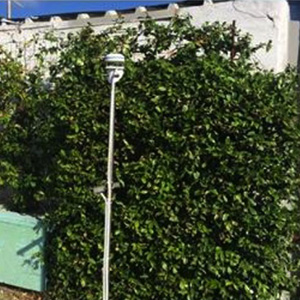A nature-based system for improving Mediterranean buildings’ performance: contribution to energy saving by heat transfer reduction and influence of climatic parameters

Published: 20 February 2023
Abstract Views: 1056
PDF: 400
HTML: 5
HTML: 5
Publisher's note
All claims expressed in this article are solely those of the authors and do not necessarily represent those of their affiliated organizations, or those of the publisher, the editors and the reviewers. Any product that may be evaluated in this article or claim that may be made by its manufacturer is not guaranteed or endorsed by the publisher.
All claims expressed in this article are solely those of the authors and do not necessarily represent those of their affiliated organizations, or those of the publisher, the editors and the reviewers. Any product that may be evaluated in this article or claim that may be made by its manufacturer is not guaranteed or endorsed by the publisher.
Similar Articles
- Silvana Fuina, Giuseppe C. Marano, Giuseppe Puglisi, Domenico De Tommasi, Giacomo Scarascia-Mugnozza, Thermo-mechanical response of rigid plastic laminates for greenhouse covering , Journal of Agricultural Engineering: Vol. 47 No. 3 (2016)
- Rita Papa, Giuseppe Manetto, Emanuele Cerruto, Sabina Failla, Mechanical distribution of beneficial arthropods in greenhouse and open field: A review , Journal of Agricultural Engineering: Vol. 49 No. 2 (2018)
- Alessio Cislaghi, Gian Battista Bischetti, Best practices in post-flood surveys: The study case of Pioverna torrent , Journal of Agricultural Engineering: Vol. 53 No. 2 (2022)
- Stefano Benni, Enrica Santolini, Alberto Barbaresi, Daniele Torreggiani, Patrizia Tassinari, Calibration and comparison of different CFD approaches for airflow analysis in a glass greenhouse , Journal of Agricultural Engineering: Vol. 48 No. 1 (2017)
- Simone Pascuzzi, The effects of the forward speed and air volume of an air-assisted sprayer on spray deposition in tendone trained vineyards , Journal of Agricultural Engineering: Vol. 44 No. 3 (2013)
- Qazeem Opeyemi Ogunlowo, Adedayo Afeez Azeez, Wook Ho Na, Anis Rabiu, Misbaudeen Aderemi Adesanya, Ezatullah Zakir, John Ademola Ijadunola, Bukola Olanrewaju Afolabi, Babajide Saheed Kosemani, Titus Adeyinka Ilori, Hyun-Woo Lee, Analysis of microclimate temperature and relative humidity distribution of local poultry house in a subtropical area of Nigeria , Journal of Agricultural Engineering: Vol. 55 No. 2 (2024)
- Maria Elena Menconi, David Grohmann, Statistical assessment of vegetation dynamics within protected areas using remote sensing data , Journal of Agricultural Engineering: Vol. 44 No. 1 (2013)
- Hui Yang, Yuhao Li, Chengguo Fu, Rongxian Zhang, Haibo Li, Yipeng Feng, Yaqi Zhang, Hongbin Cong, Fuquan Nie, Research on inspection route of hanging environmental robot based on computational fluid dynamics , Journal of Agricultural Engineering: Vol. 55 No. 2 (2024)
- Canio Manniello, Giuseppe Cillis, Dina Statuto, Andrea Di Pasquale, Pietro Picuno, Experimental analysis on concrete blocks reinforced with Arundo donax fibres , Journal of Agricultural Engineering: Vol. 53 No. 1 (2022)
- Nathalie Almaru Caraballo-Arias, Vito Ferro, Assessing, measuring and modelling erosion in calanchi areas: a review , Journal of Agricultural Engineering: Vol. 47 No. 4 (2016)
<< < 8 9 10 11 12 13 14 15 16 17 > >>
You may also start an advanced similarity search for this article.

 https://doi.org/10.4081/jae.2023.1520
https://doi.org/10.4081/jae.2023.1520







